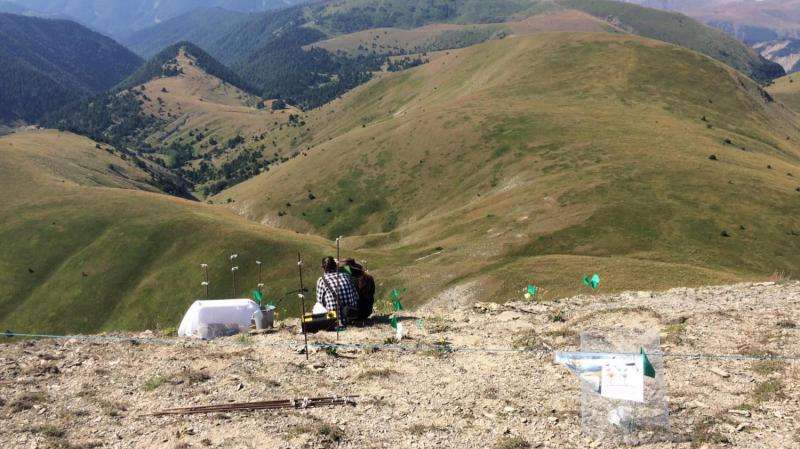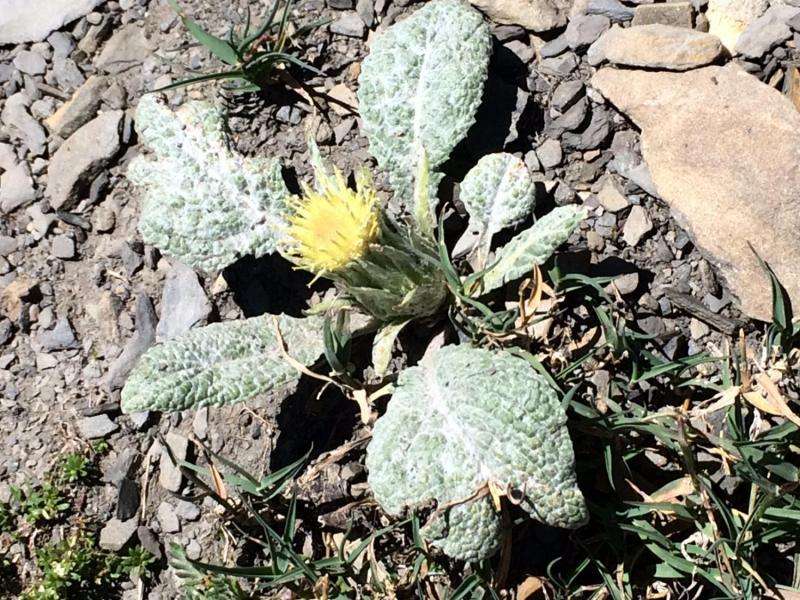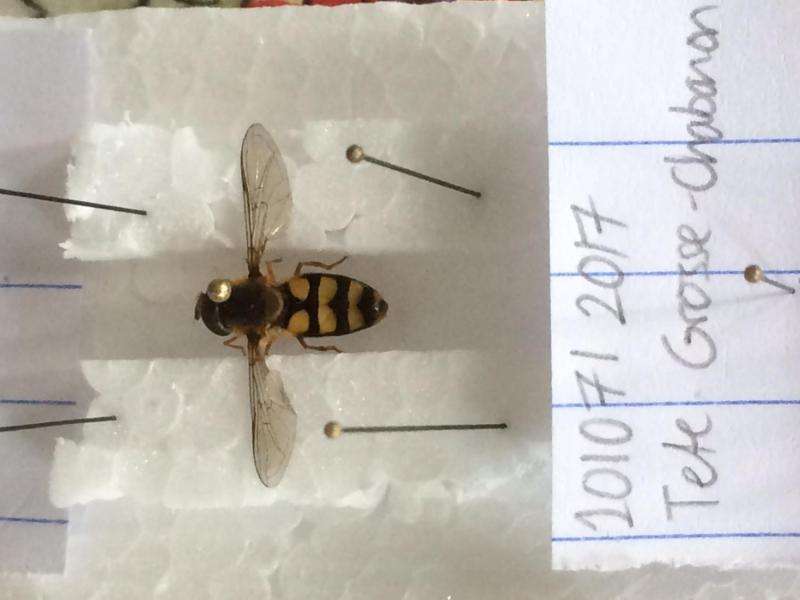Decoding the unique chromosomal complexities of alpine daisies, dandelions and thistles

Field work, particularly in the mountains, can present numerous sources of stress in the form of challenging working conditions, red tape and plants not growing where or when you expected. This stress can be somewhat lessened when the country you are working in has some of the best wine and cheese in the entire world. During my field work as a Kew MSc student in the French Alps this summer, we conducted research on a group of plants called the Asteraceae; the family that contains all daisies, dandelions and thistles.
This plant family contains a high occurrence of a phenomenon called polyploidisation; a genetic abnormality which means that each cell in a plant has more than two copies of each chromosome, which contains all the genetic information it will need whilst alive. All species have a set number of chromosomes but most have two copies of each – humans have 23 pairs, a rice plant has 12 pairs and a dog has 39 pairs. But for some reason, rather than pairs, plants can have tens of copies of each chromosome in an individual cell. In fact, the bread you eat is hexaploid; it has six copies of each chromosome! Having multiple copies of each chromosome can strongly impact survival and ecology for plants and so we were interested to see how it affects Asteraceae flowers when they grow in extreme alpine environments. So this summer, we went in search of these plants in the Alps of Southern France.
Specimen collection
The main focus of this trip, and a daily task, was to study plants growing in the wild. This meant that for every plant, we had to record our GPS location and take various measurements of the plant and its flowers. We also had to collect an individual plant for species identification as well as leaves to help us conduct lab work upon our return to Kew to assess the level of polyploidisation. We also collected seeds to study whether the plant was reproducing sexually or asexually.

One area of our research focused specifically on a plant called Senecio doronicum and what pollinates it. On a mountain called Tete Grosse, we knew from previous work that within a single population of this species, there were individuals with two different polyploidy levels. Keen to see whether we could compare the ecological success of plants with two levels of polyploidy, we wanted to test whether pollinators differentiated between the two. Basically, would plants with more than two sets of chromosomes have some measureable difference in their ecology in terms of pollination and reproduction? To do this, the team set up a system of motion-activated cameras over individual plants to monitor visits of pollinating insects.
In order to identify the insects visible in the videos, a pollinator survey of the area near the flowers was carried out. This meant catching, pinning and identifying as many different insects as we could.
The results of this research will help us to better understand how species with polyploidisation are unique and influenced by their environment, meaning that they may require different or more focused conservation efforts in the future. Alpine environments generally are expected to be impacted by climate change, so understanding the interactions between this very important plant family and its environment will allow us to monitor changes and better understand their consequences.

Provided by Royal Botanic Gardens, Kew




















